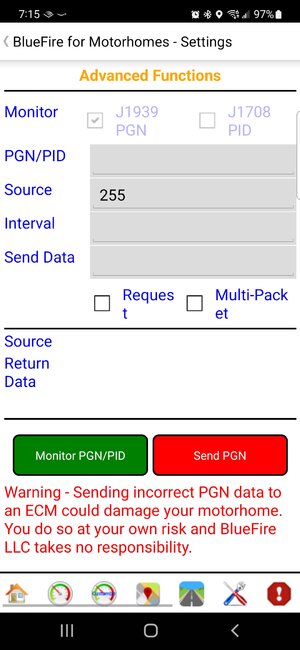- Joined
- Jul 27, 2019
- Messages
- 13,167
- Location
- Midlothian, VA
- RV Year
- 2017
- RV Make
- Newmar
- RV Model
- Ventana 4037
- RV Length
- 40' 10"
- Chassis
- Freightliner XCR
- Engine
- Cummins 400 HP
- TOW/TOAD
- 2017 Chevy Colorado
- Fulltimer
- No
For those of us that choose to get this tool, after you learn and validate it (do a regen) I suggest just monitor soot level. That's my plan. If anyone sees anything other than "normal" please speak up. I believe in letting the system manage itself but I don't want to get into the situation I was in again and in a remote area at that. It can be a great tool for monitoring. Hopefully we'll see even better info on soot levels with firmware updates.













